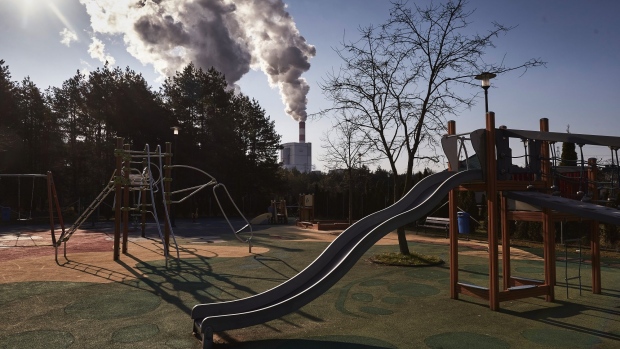Sep 22, 2021
WHO Toughens Air Quality Standards as Climate Link Strengthens
, Bloomberg News

(Bloomberg) -- The World Health Organization has set tougher guidelines for air quality as evidence increases linking air pollution with declines in human health.
In the first update of its guidelines since 2005, the United Nations health agency has adjusted almost all standards for acceptable pollution down. Such contamination is estimated to cause 7 million premature deaths and, together with climate change, is one of the biggest environmental threats, the agency said.
“The next step is for policy makers to use these guidelines to create policies to mitigate the health burden that results from air pollution,” Hans Kluge, WHO regional director for Europe, told reporters Wednesday. “We have a unique window of opportunity — the guidelines provide a robust health argument that goes hand in hand in the global fight against climate change.”
Fine particulate matter that results from burning fossil fuels for transport, energy, industrial or agricultural uses can penetrate deep into the lungs and even enter the bloodstream. These particles, known as PM2.5 and PM10 for their size in microns, can result in heart and lung diseases, as well as affect other organs.
Activities that produce fine particulate matter also emit the greenhouse gases responsible for global warming. The two problems can be tackled at the same time, using similar tools, the UN agency said.
“If we want to reduce levels of air pollution globally a key question is related to the energy sector — it is very much about accelerating this healthy energy transition,” said Maria Neira, WHO’s director of environment, climate change and health. “Moving to renewable and clean sources of energy will have a very positive impact on reducing greenhouse-gas emissions, tackle the causes of climate change and reduce air pollution.”
The WHO has updated the guidelines for six pollutants that are known to harm human health—particulate matter, ozone, nitrogen dioxide, sulfur dioxide and carbon monoxide. Almost 80% of deaths related to PM2.5 could be avoided if air pollution levels were reduced to those proposed in the updated guideline, according to the agency.
“We know the magnitude of the problem and we know how to solve it,” Kluge said. “These updated guidelines give policy-makers solid evidence and the necessary tool to tackle this long-term health burden.”
©2021 Bloomberg L.P.